শিল্প ভালভ মান গুরুত্ব.
নির্ভরযোগ্যতা নিশ্চিত করার জন্য শিল্প ভালভ মান অত্যন্ত গুরুত্বপূর্ণ, নিরাপত্তা, এবং বিভিন্ন শিল্প সেক্টর জুড়ে ভালভের দক্ষতা.
আমি বিশ্বাস করি যে কঠোর নিরাপত্তা প্রোটোকল এবং মানদণ্ড স্থাপনে মানগুলি একটি গুরুত্বপূর্ণ ভূমিকা পালন করে, minimizing the risk of valve failures, and enhancing overall safety in industrial processes.
From my perspective, standards provide a framework for the design and manufacturing of valves, ensuring a consistent level of quality and reliability across different manufacturers and applications.
I value how standardization promotes interoperability, allowing valves from different sources to function seamlessly together. This is crucial for the integration of valves into complex industrial systems.
I appreciate how standards set specific criteria for performance, স্থায়িত্ব, and functionality, enabling manufacturers to adhere to robust quality control measures. This results in reliable and long-lasting valve products.
Adherence to industrial valve standards ensures compliance with regulatory requirements, covering aspects such as safety, environmental impact, and overall product quality.
I recognize that common standards provide a universal language for specifications, easing international trade by allowing manufacturers to produce valves that meet recognized global criteria.
I understand how standardization streamlines the design and manufacturing processes, reducing costs associated with customization. This efficiency contributes to cost-effective solutions for both manufacturers and end-users.

Introduction to the diverse applications of industrial valves across various industries.
As I delve into the multifaceted realm of industrial valves, their diverse applications across various industries unfold before me, showcasing their indispensable role in fluid control and regulation. These valves are not mere components; they are the silent conductors orchestrating the symphony of processes in different sectors. Let’s embark on a journey to explore the array of industries where industrial valves stand as essential guardians of fluid dynamics:
Oil and Gas Industry:

In the oil and gas sector, I witness industrial valves at the forefront, meticulously managing the extraction, processing, and transportation of vital resources. Their adept control over flow and pressure ensures the smooth operation of pipelines, শোধনাগার, and offshore platforms.
রাসায়নিক প্রক্রিয়াকরণ:
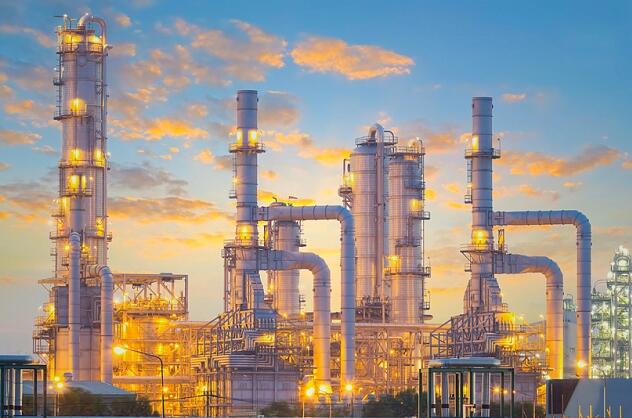
Venturing into chemical plants, I observe valves as guardians of precision, regulating the flow of various chemicals. Their role extends beyond control, contributing significantly to manufacturing processes and upholding stringent safety standards.
Water and Wastewater Treatment:
Navigating through water treatment facilities, valves emerge as custodians of water resources. Whether controlling flow in treatment plants or overseeing water distribution and wastewater disposal, their presence is pivotal.
Power Generation:
Within the vast landscape of power plants, valves reveal their significance in steam systems, cooling circuits, and fuel supply lines. They become integral players, ensuring the efficient operation of turbines and boilers.
Mining and Metallurgy:
In the rugged terrain of mining operations, valves take center stage, managing the flow of slurries, gases, এবং রাসায়নিক. Their indispensable role extends to metal extraction and refining processes, contributing to the core of these operations.
Pulp and Paper Industry:
The intricate dance of valves continues in the pulp and paper industry, where they facilitate the regulated flow of liquids and gases. Their role in this sector is vital, ensuring the seamless operation of processes critical to paper production.
Purpose and Scope of Standards

From my perspective, standards offer a consistent framework governing the design, manufacturing, and testing of valves. This uniformity ensures that valves from different manufacturers adhere to recognized criteria, fostering reliability and interoperability.
In my exploration, I’ve found that common standards establish a universal language for specifications, simplifying international trade. Manufacturers can produce valves that meet globally recognized criteria, streamlining cross-border transactions.
Global Scope of Industrial Valve Standards:
Organizations like the International Organization for Standardization (ISO) and the American National Standards Institute (এএনএসআই) play a pivotal role in shaping global standards for industrial valves. These standards serve as reference points for manufacturers across the globe.
Different regions may have specific standards influenced by local regulations and industry practices. যাহোক, efforts are underway to align regional standards with international norms to ensure a cohesive global approach.
Major International Standards Organizations
International Organization for Standardization (ISO):
The ISO is a preeminent global standards-setting body. It develops and publishes international standards that encompass a wide range of industries, including industrial valves.
ISO standards provide a common language and set of criteria for manufacturers, ensuring consistency and interoperability across borders. ISO standards related to industrial valves cover aspects such as design, উপকরণ, and testing procedures.
American National Standards Institute (এএনএসআই):
ANSI oversees the development of standards for a variety of industries, including valves. It serves as the national standards body for the United States.
ANSI facilitates the development of consensus-based standards, ensuring that industry stakeholders, experts, and government representatives contribute to the standardization process. ANSI standards often align with global norms.
ANSI collaborates with international standards bodies, such as ISO and the International Electrotechnical Commission (IEC), to harmonize standards and promote global consistency. It actively engages in partnerships to enhance the adoption of standards.
European Committee for Standardization (CEN):
CEN develops standards for European countries, fostering harmonization and ensuring a common framework for industries, including the manufacturing of industrial valves.
CEN standards contribute to the safety, quality, and efficiency of industrial valves within the European market. They address various aspects, from performance requirements to testing methods.
CEN collaborates with other regional standards organizations and participates in international standardization efforts. This collaboration enhances the alignment of European standards with global counterparts.
International Electrotechnical Commission (IEC):
IEC focuses on developing international standards for electrical, electronic, and related technologies. While not specifically centered on valves, it may contribute to standards related to valve automation and control systems.
IEC standards may intersect with industrial valve standards, particularly those related to valve actuators, control systems, and associated electrical components.
IEC collaborates with ISO to develop standards that integrate both electrical and mechanical aspects, ensuring a comprehensive approach to industrial products, including valves with electronic components.
Deutsches Institut für Normung (থেকে):
DIN is the German Institute for Standardization, contributing to the development of standards for various industries, including the manufacturing of industrial valves.
DIN standards are widely recognized and adopted in Germany and beyond. They cover aspects such as materials, dimensions, and testing procedures for industrial valves.
DIN collaborates with international standards bodies to align its standards with global norms. Its participation in the standardization process ensures that German expertise contributes to the development of comprehensive standards.
Valve Types and Classification
গেট ভালভ:
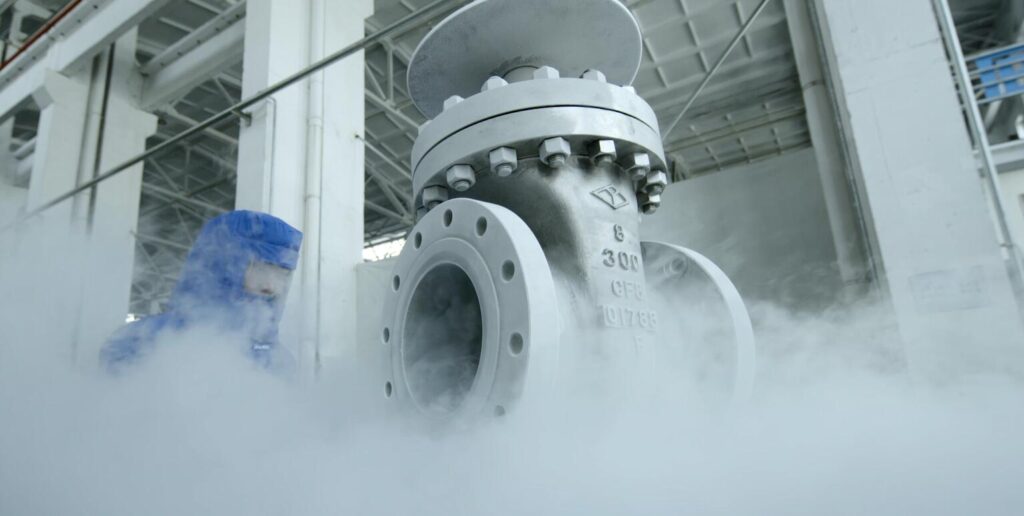
Description: Gate valves control the flow of fluid by raising or lowering a gate (a wedge-shaped disc) into or out of the flow path. They provide a tight seal when fully closed.
Applications: Commonly used in on/off applications where a full flow or complete shut-off is required. Found in water and wastewater systems, তেল এবং গ্যাস পাইপলাইন, এবং আরো.
Globe Valves:
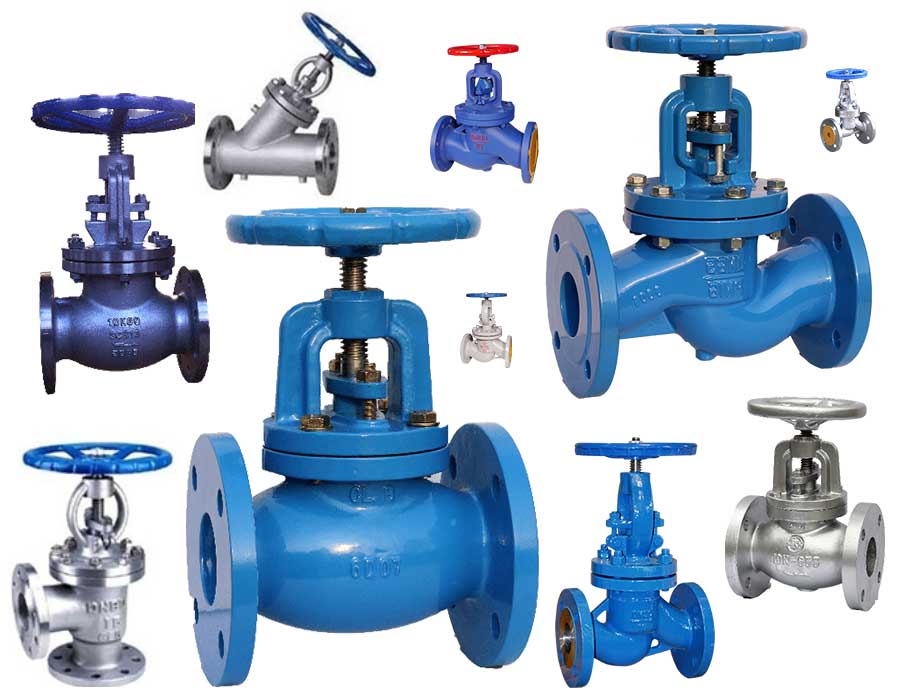
Description: Globe valves have a disc (plug or disc) that moves perpendicular to the flow path, controlling the fluid by changing the size of the flow opening.
Applications: Suitable for throttling or regulating flow. Commonly used in industries such as chemical processing, পেট্রোকেমিক্যাল, এবং বিদ্যুৎ উৎপাদন.
বল ভালভ:
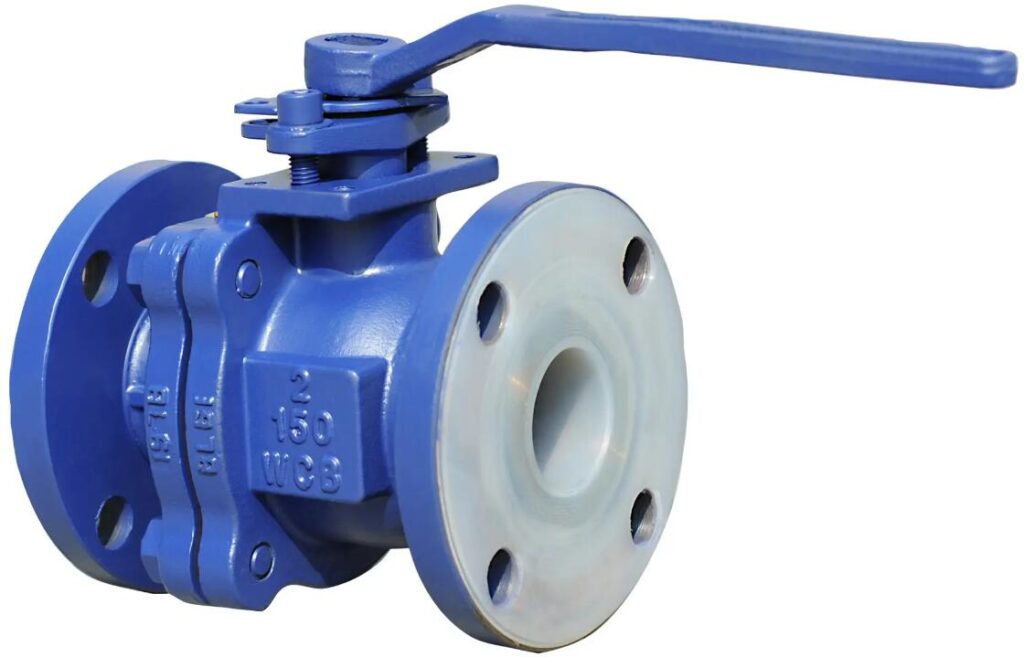
Description: Ball valves use a spherical disc (the ball) to control flow. When the ball is positioned parallel to the flow, it allows for full flow; when perpendicular, it blocks the flow.
Applications: Widely used in various industries due to their versatility. Common applications include water supply systems, gas pipelines, এবং রাসায়নিক প্রক্রিয়াজাতকরণ.
Butterfly Valves:
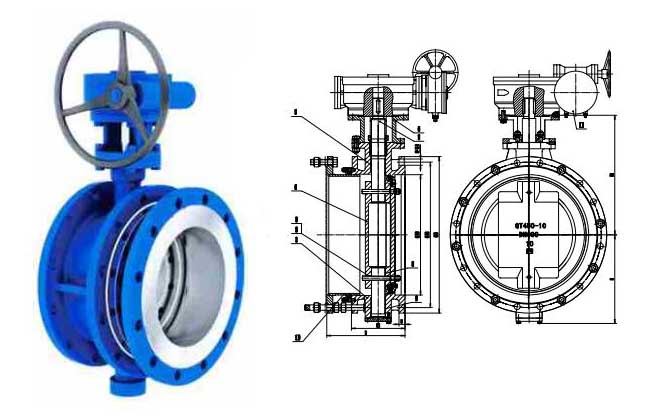
Description: Butterfly valves have a disc that rotates around a shaft in the center of the valve. The disc’s rotation controls the flow by either aligning with the flow path or blocking it.
Applications: Ideal for large-diameter pipelines and applications where quick and efficient control is required. Used in HVAC systems, জল চিকিত্সা, and certain industrial processes.
Check Valves:
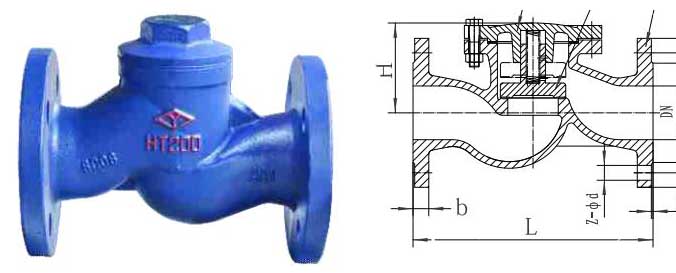
Description: Check valves allow flow in one direction only, ব্যাকফ্লো প্রতিরোধ. They typically have a flap, disc, or swing mechanism that opens in the direction of flow.
Applications: Commonly used to prevent backflow in water and wastewater systems, রাসায়নিক প্রক্রিয়াকরণ, and oil and gas pipelines.
Control Valves:
Description: Control valves regulate fluid flow by varying the size of the flow passage. They are equipped with actuators for precise control.
Applications: Integral in processes requiring precise control, such as in chemical manufacturing, বিদ্যুৎ উৎপাদন কেন্দ্র, and refining.
Safety Valves:
Description: Safety valves automatically release pressure when it exceeds a predetermined level, protecting equipment from overpressure.
Applications: Critical in applications where pressure control is paramount, such as steam boilers and pressure vessels.
Key Parameters and Testing Criteria
| General Valve Standards — Basic Parameter Class Standards | ||
| Asme-API-MSS-AWWA CLASS Valve Standards | GB-JB CLASS+PN Valve Standards | |
| ASME B16.34 Flanged, Welding, Threaded-End Valves | GB12224 Steel valves generally have requirements specified by the CLASS and PN series. | |
| ASME B16.348 Flanged, Welding, Threaded-End Gate Valve | GB12224 Steel valves generally have requirements specified by the CLASS and PN series, especially for gate valves. | |
| AP1600 Translation: Flanged and Socket Welded Bolted Bonnet Bronze Globe Valve (Heavy Duty) | GB122344 Bolted Bonnet Steel Gate Valve for the Petroleum and Natural Gas Industry (CLASS+PN Series) | |
| API603 Flanged and Socket Welded Bolted Bonnet Corrosion-Resistant Steel Valve | GB12224 General Requirements for Steel Valves (Gate Valves of CLASS+PN Series) | |
| API 6DX Pipeline Valve (গেট ভালভ) | GB 19672 Pipeline Valves, CLASS+PN Series, গেট ভালভ GB 201736 Pipeline Valves, CLASS+PN Series, গেট ভালভ | |
| GB 12232C Flanged Cast Iron Gate Valve (PN Series) | ||
| AWWA C209 Resilient Seated Gate Valve for Water Supply Systems | GB 24924 Resilient Seated Gate Valve for Water Supply Systems (PN Series) | |
| JB 10637 Expanding Gate Valve with Metal Seating (CLASS+PN Series) | ||
| JB 8691 Lug Type Knife Gate Valve (PN Series) | ||
CB 846 Threaded Iron and Bronze Valve (PN Series, গেট ভালভ) | ||
| Common product standards for globe valves, ভালভ পরীক্ষা, and lift check valves. | ||
| ASME-API-MSS-AWWA CLASS Valve Standards | GB-JB CLASS+PN Valve Standards | |
| ASME R16.34: Flanged, Welding, Threaded-End Valves (Globe Valves, Check Valves, Lift Check Valves) | GB12224: General Requirements for Steel Valves (CLASS+PN Series Globe Valves, Globe Check Valves, Lift Check Valves, Plug Valves) | |
| API600: Bolted Bonnet Steel Valves for Flanged and Welding Ends (Globe Valves, Globe Check Valves, Lift Check Valves – Heavy Duty) | GB12235: Steel Globe Valves and Lift Check Valves for Petroleum, Petrochemical, and Related Industries (CLASS+PN Series – Heavy Duty) | |
| বি.এস 1873: Steel Globe and Check Valves for Petroleum, Petrochemical, and Related Industries – Flanged and Butt-Welding Ends (CLASS+PN Series – Heavy Duty) | ||
| GB12233: Cast Iron Lift Check Valve and Lift Check Valve | ||
| ASME B16.34: Flanged, Welding, Threaded-End Valves (Swing Check Valves) | GB12224: General Requirements for Steel Valves (CLASS+PN Series Swing Check Valves, Plug Valves) | |
| API600: Bolted Bonnet Steel Valves for Flanged and Welding Ends (Swing Check Valves) | GB122368: Steel Swing Check Valves for Petroleum, রাসায়নিক, and Related Industries (CLASS+PN Series Swing Check Valves) | |
| BS18688: Steel Check Valves for Petroleum, Petrochemical, and Related Industries – Flanged and Butt-Welding Ends (CLASS+PN Series) | GB13932: Cast Iron Swing Check Valves (PN Series) | |
| APT 5948: Flanged, Wafer, and Welded Check Valves – Heavy Duty | GB12236: Steel Swing Check Valves for Petroleum and Chemical Industries (CLASS+PN Series Swing Check Valves) | |
| JB8937: Wafer Check Valves (CLASS+PN Series) | ||
| GB213876: Axial Flow Check Valves (CLASS+PN Series) | ||
| General Ball Valve Standards | ||
| ASMF-API-MSS-AWWA CLASS Valve Standards | GB-JB CI.ASS+PN Valve Standards | |
| AP1608: Metal Ball Valves for Flanged, Threaded, and Welding Connections | GB 12237: Steel Ball Valves for Petroleum, Petrochemical, and Related Industries (CLASS+PN Series) | |
| বি.এস 5351: Specification for Steel Ball Valves for the Petroleum, Petrochemical, and Allied Industries (CLASS+PN Series) | ||
| API6DX: Pipeline Valves (বল ভালভ) | GB19672: Pipeline Valves (বল ভালভ, CLASS+PN Series) | |
| GB 21385: Eccentric Half Ball Valves (CLASS+PN Series) | ||
| GB26146: Eccentric Semi-Ball Valves (CLASS+PN Series) | ||
| General Butterfly Valve Standards | ||
| ASME-API-MSS-AWWACLASS Valve Standards | GB-JB CIASS+PN Valve Standards | |
| API609: Double Flanged, Wafer, and Lugged Type Butterfly Valves | ||
| AWWA C504: Rubber-Seated Butterfly Valves | GB122385: Flanged and Wafer Connection Elastic Sealed Butterfly Valves (PN Series) | |
| GB 261448: Flanged and Wafer Connection Steel-lined Fluorine Plastic Butterfly Valves (PN Series) | ||
| JB8527: Metal-Seated Butterfly Valves (CLASS+PN Series) | ||
| General Plug Valve Standards | ||
| ASME-API-MSS-AWWA CLASS Valve Standards | GB-JB CLASS+PN Valve Standards | |
| API599: Metal Plug Valves for Flanged, Threaded, and Welding Ends | GB 221306: Steel Plug Valves (CLASS+PN Series) | |
| API593: Flanged Connection Ductile Iron Plug Valves | GB12240: Iron Plug Valves (CLASS+PN Series) | |
| JB111526: Metal-Seated Lift Plug Valves (CLASS+PN Series) | ||
| Common product standards for low-temperature valves. | ||
| ASME-API-MSS-AWWA CIASS Valve Standards | GB-JB CLASS+PN Valve Standards | |
| বি.এস 6364: Low-Temperature Valves | GB/T 24925: Low-Temperature Valve Technical Conditions | |
| Common Small Caliber, Threaded, Socket End Valve Product Standards | ||
| ASME APIMSS AWWA CLASS系列阀门标准 | GBJB CLASS+PN系列阀门标准 | |
| API 6024: Steel Valves for Nominal Sizes DN100mm and Smaller for Petroleum and Natural Gas Industries, Globe Valves, and Check Valves | JB 77468: Compact (Small Caliber) Steel Valves (CLASS Series) for Gate Valves, Globe Valves, and Check Valves | |
| GB/T287766: Compact (Small Caliber) Steel Valves (CLASS Series) for Gate Valves, Globe Valves, and Check Valves | ||
| GB8468: Iron and Copper Threaded Connection Valve (PN Series) for Globe Valves, গেট ভালভ, and Check Valves | ||
| General Valve Test Standards | ||
| ASME-API-MSS-AWWA Valve Standards | GB – JB Valve Standards | |
| API 59: Inspection and Testing of Valve Gate | GB264808: Inspection and Testing of Valves JB 90928: Inspection and Testing of Valves | |
| GB 13927: Pressure Test for Industrial Valves | ||
| ASME B16.104 FCI7D-2988: Seat Leakage Test for Control Valves | ||
| API607: Fire Test for Resilient Seated Quarter-Turn Valves | GB264798: Fire Test for Resilient Seated Quarter-Turn Valves | |
| API 6FAK: Fire Test Specification for Valves | ||
| API6FK: Fire Test for Valves | SY 6745: End Fire Test | |
| APL GFC: Fire Test for Valve Bottom Seal | SY 6746: Fire Test for Valve Bottom Seal | |
| API 6FDX: Fire Test for Check Valves | GR 264828: Fire Test for Check Valves | |
| ISO 15848.16: Fugitive Emission Type Test and Assessment for Valves | ||
| ISO 15848.26: Fugitive Emission Test for Valves | GB264816: Fugitive Emission Test for Valves | |
| API 6222: Valve Packing Test Specification | ||
| General Valve Test Standards | ||
| ASME-API-MSS-AWWA Valve Standards | GB-JB Valve Standards | |
| MSS SP558: Visual Inspection of Valve Cast Steel | JB 7927: Visual Inspection of Valve Cast Steel | |
| MSS SP54 (ASME B16.34 app.): Radiographic Examination of Valve Cast Steel | JB 61408: Radiographic Examination of Valve Cast Steel | |
| ASTM E709 ASME B16.34: Magnetic Particle Examination of Valve Castings | JB 64396: Magnetic Particle Examination of Valve Castings | |
| ASTM E165 (ASME B16.34): Liquid Penetrant Examination of Valve Castings | JB 69028: Liquid Penetrant Examination of Valve Castings | |
| ASTM A388, A609 (ASME B16.34): Ultrasonic Examination of Valve Forgings, Castings | JB 6903: Ultrasonic Examination of Valve Forgings | |
| NACE MR01756: Sulfide Stress Cracking Resistant Metallic Materials for Oilfield Equipment | GB 209728: Materials Resistant to Sulfide Stress Cracking in Corrosive Oil and Gas Production Environments | |
| General Valve Material Standards | ||
| ASME-ASTM Valve Standards | GB-JB Valve Standards | |
| ASTM: Carbon Steel Castings for Valves | GB122286: Carbon Steel for Valves A105, 25 | |
| ASTM A216: Carbon Steel Castings for Valves WCA, WCB, WCC | GB12229: Carbon Steel for Valves WCA, WCB, WCC | |
| ASTM A351: Stainless Steel for Valves CF3, CF8, CF3M, CF8M, CF8C | GB12230: Stainless Steel for Valves CF3, CF8, CF3M, CF8M, CF8C | |
| ASTM A217: High-Temperature Alloy Steel Castings for Power Station Valves WC1, WC6, WC9, C12A | JB 52636: High-Temperature Alloy Steel Castings for Power Station Valves WC1, WC6, WCG, C12A | |
| ASTM A352: Steel Castings for Valves for Moderate-Temperature Service LCA, LCB, LC1, LC2, LC3, LC9, CA6NM | JB 72486: Low-Temperature Steel Castings for Valves LCA, LCB, LCC, LC1, LC2, LC3, LC9, CA6NM | |
